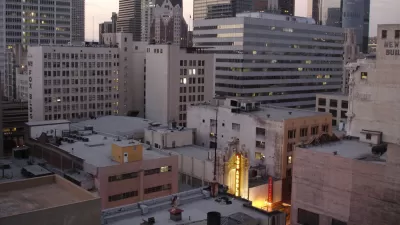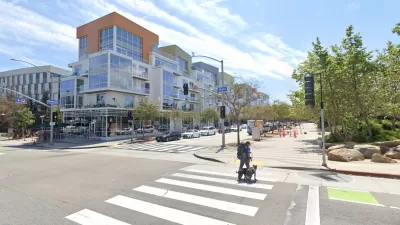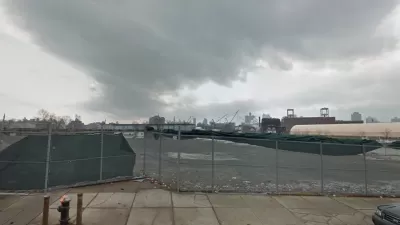A proposed clean tech corridor along the L.A. River east of downtown is another twist in the ongoing battle between competing interests for residential development and the preservation of industrial space.
The article features in-depth Q&A with Central City East Association Executive Director Estela Lopez:
"For the vast majority of the last 25 years, the city has ignored industrial Downtown. In the last year and a half, there has been renewed attention to jobs and retaining jobs in the city of Los Angeles. The way to do that may be to look at the development of this area as an industrial campus for the new industry-clean technology."
"When the Industrial Land Use Initiative was first discussed by the CRA/LA and the Planning Department, it divided this community. It divided the community between the industrial operators and the people who understand the demand for housing throughout Los Angeles. There aren't many communities that want greater density. Here you have a community that sees housing as an instrument for the realization for the new vision for the Arts District, an artists' community that has been a vital part of the area for several decades and wants to remain a vital part of the area."
"The streets here in CCE are narrow and incapable of meeting the goods movement requirements of today's modern industrial economy. The parcelization of the district works against anyone needing to amass land expansive enough-to provide the proper setbacks. That is a question that has not been remedied in 25 years, and I don't see how that could be easily done. The land here is simply not well-suited for reintroduction of massive industrial uses."
Thanks to James Brasuell
FULL STORY: Will The Push to Create Green Manufacturing Jobs Shape the Development of L.A.'s Central City East?

Maui's Vacation Rental Debate Turns Ugly
Verbal attacks, misinformation campaigns and fistfights plague a high-stakes debate to convert thousands of vacation rentals into long-term housing.

Planetizen Federal Action Tracker
A weekly monitor of how Trump’s orders and actions are impacting planners and planning in America.

In Urban Planning, AI Prompting Could be the New Design Thinking
Creativity has long been key to great urban design. What if we see AI as our new creative partner?

King County Supportive Housing Program Offers Hope for Unhoused Residents
The county is taking a ‘Housing First’ approach that prioritizes getting people into housing, then offering wraparound supportive services.

Researchers Use AI to Get Clearer Picture of US Housing
Analysts are using artificial intelligence to supercharge their research by allowing them to comb through data faster. Though these AI tools can be error prone, they save time and housing researchers are optimistic about the future.

Making Shared Micromobility More Inclusive
Cities and shared mobility system operators can do more to include people with disabilities in planning and operations, per a new report.
Urban Design for Planners 1: Software Tools
This six-course series explores essential urban design concepts using open source software and equips planners with the tools they need to participate fully in the urban design process.
Planning for Universal Design
Learn the tools for implementing Universal Design in planning regulations.
planning NEXT
Appalachian Highlands Housing Partners
Mpact (founded as Rail~Volution)
City of Camden Redevelopment Agency
City of Astoria
City of Portland
City of Laramie





























